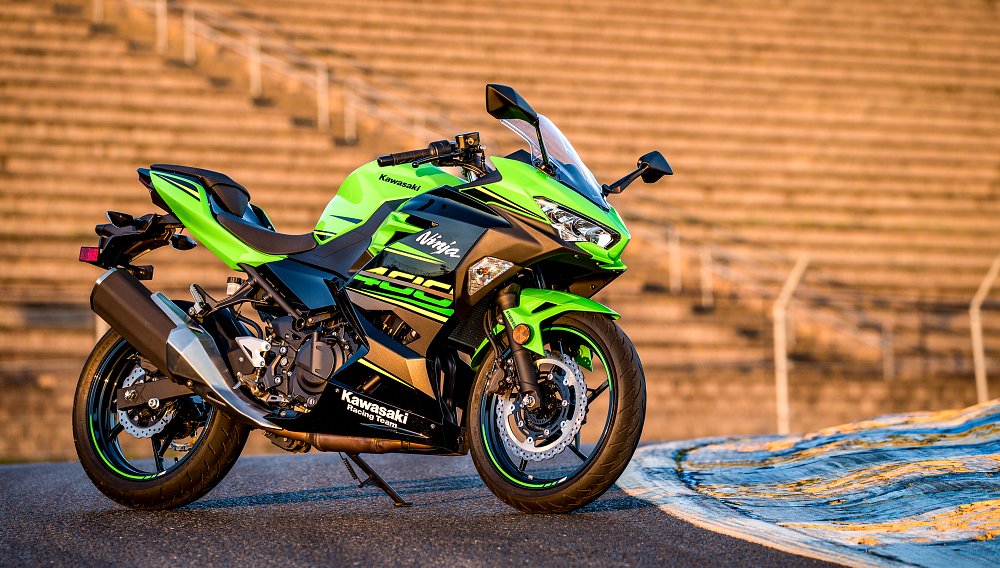Once upon a time, in the early 2000s, I printed out a MapQuest route and followed the paper turn-by-turn directions to check out a used motorcycle advertised in the local newspaper. The ad was for a 2000 Kawasaki Ninja 250.
Back in my beginner rider days, the small displacement starter bike market was, well, nothing like it is today. The pickings were slim, and even the popular Ninja 250 underwhelmed me when I saw it firsthand. I had expected a mini version of the ZX-6R, with the same aggressive lines and sharpness of its older brother. Instead, this baby Ninja had styling that was stuck in the 1980s, with a clunky tail, square headlight, and a rather tall seat height.
Those Ninja 250s of yesteryear are a far cry from what is available today from Team Green. I’ve watched as the Ninja 250 finally upgraded to some new clothes, then evolved into the more powerful 300, and now finally here with the 2022 Ninja 400 I would be riding. Only a few minor updates have been made since the Ninja 400 debut in 2018, so for those looking for a detailed breakdown, check out what Spurg had to say in his first ride review. The Ninja 400 has become a fan favorite for new and experienced riders alike who are looking for a budget-friendly sport bike, and for me I was curious to see if the new-age Ninja had fixed my nitpicks from long ago.
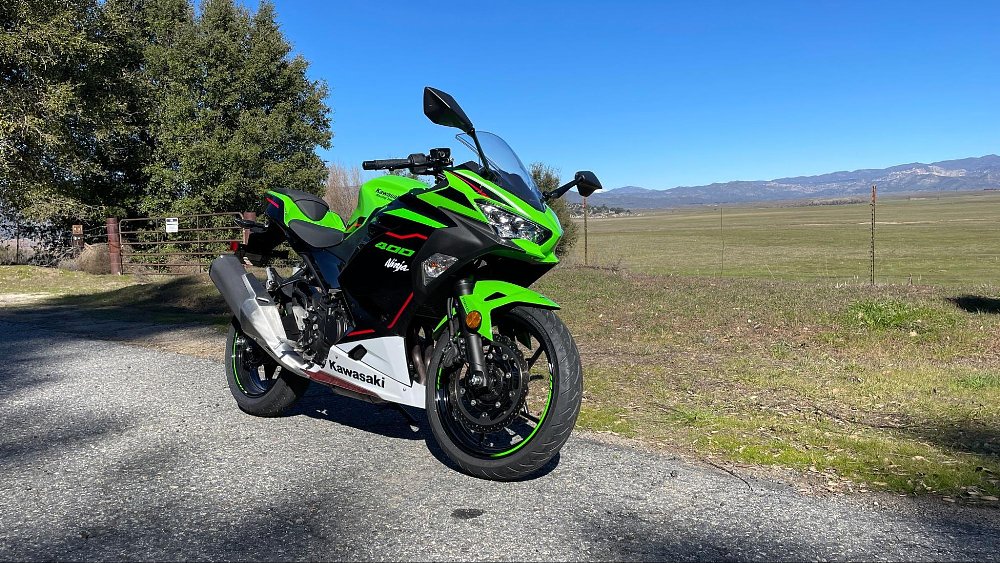
Kawasaki Ninja 400: Curb candy
Unlike the clunky 250 of the past, the Ninja 400 is a spitting image of its world-class bigger siblings, the ZX-6R and ZX-10R. Kawasaki has faithfully recreated the stance and bodywork of the more powerful models in the Ninja 400 so new riders can also gaze with some pride on their green machine.
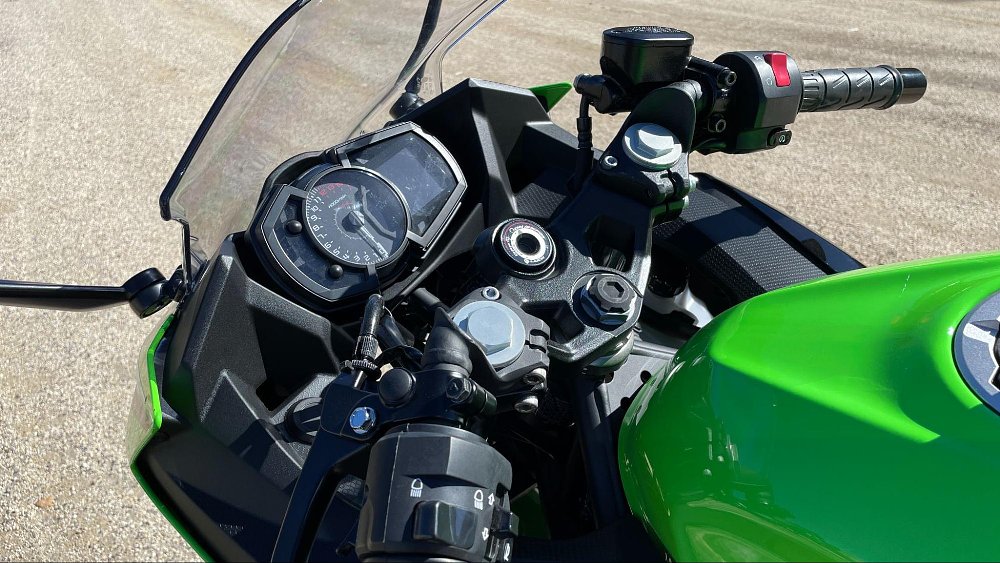
The real magic of the Ninja 400 is in how it transforms that sporty look into a much more comfortable riding position compared to most sport bikes on the market. The “rise” of the clip-on handlebars brings the grips closer to the rider and helps alleviate that aching between the shoulder blades on longer rides.
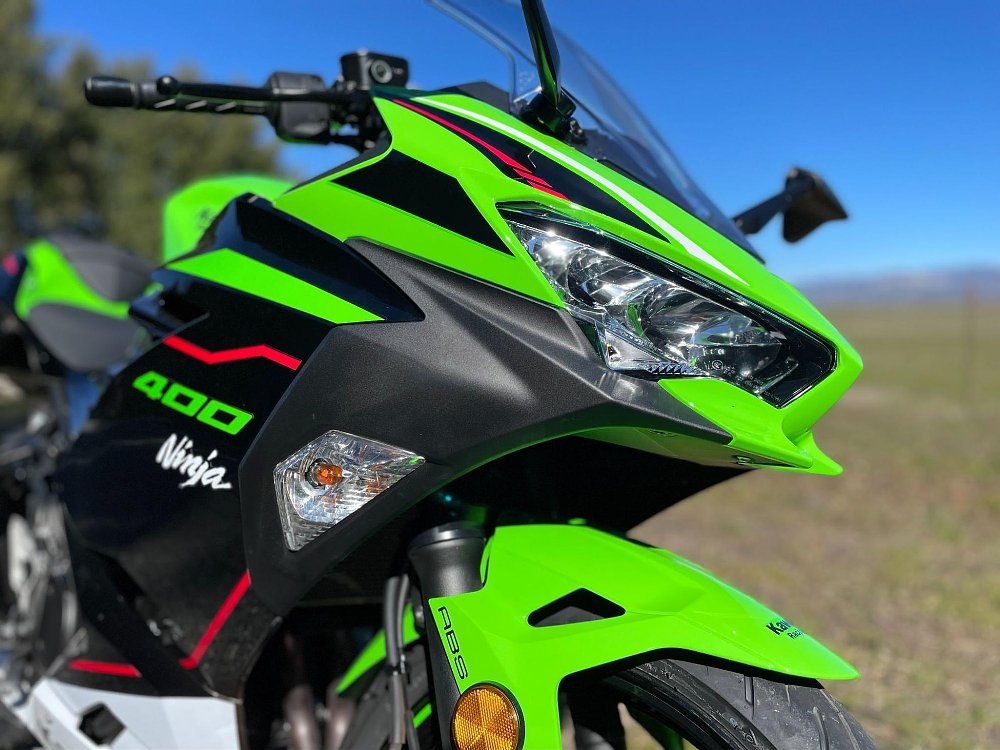
While the rider's upper body slots into a neutral position, the lower body has a traditional bent-knee crouch typical of a sport bike. Even for my small stature (of five feet, four inches) I can predict some sore knees after an all-day ride, but I believe it to be a fair trade-off for the performance and styling the sport bike enthusiast is after. Less than ideal is the far stretch to the hand controls. Both the clutch and front brake lever were just at the edge of my fingertips. Adjustable levers would be of great service to both short and tall riders of all skill levels on the Ninja 400.
The 30.9-inch seat height had me comfortably getting the balls of my feet on the ground, so most shorter riders should be able to manage the Ninja 400, though it is still on the tall side as beginner bikes go. The reach to the ground is helped by a sculpted, narrow gas tank that suited my small frame quite well, both when standing and in the riding position.
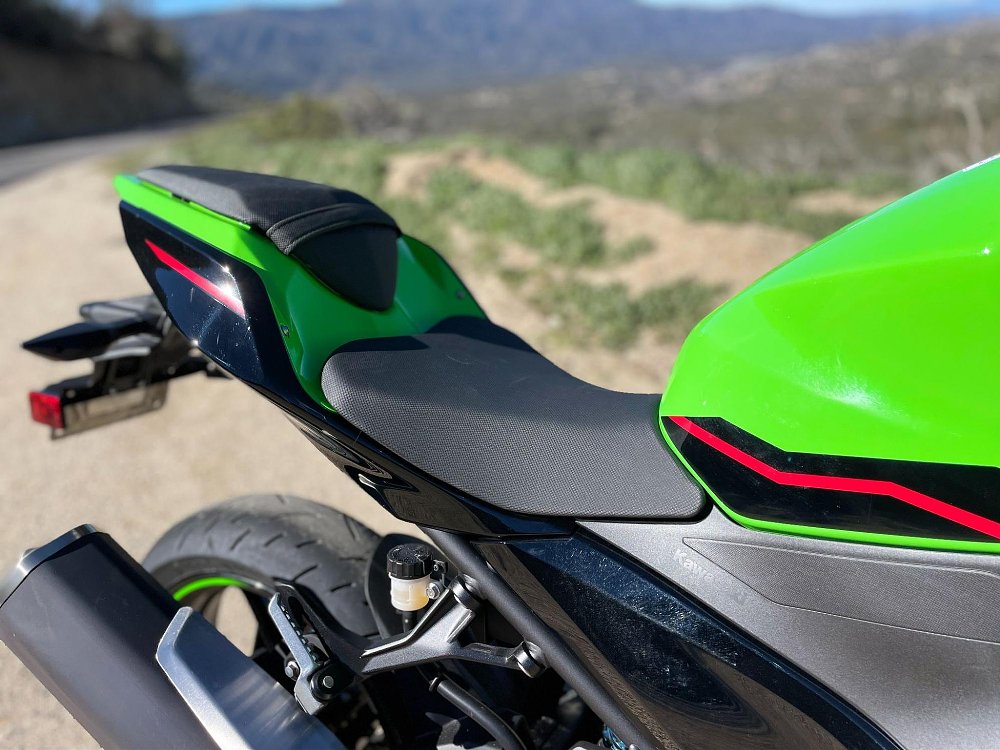
The spirit of a sport bike
So the Ninja 400 looks the part of a pint-sized sport machine, but does it move like one? I plotted a course on REVER (no more printed MapQuest pages, thank goodness) to sample the baby Ninja’s capabilities on the road.
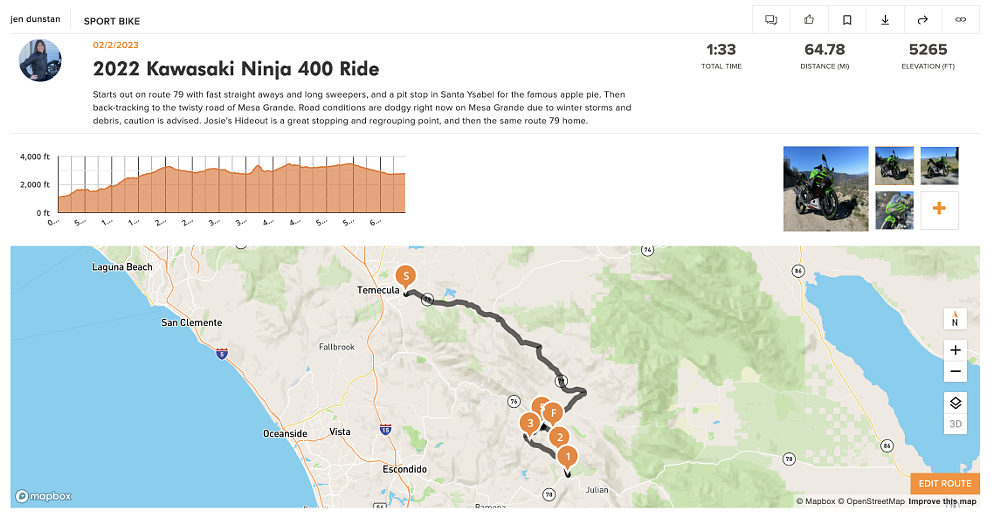
The ride started out with some fast-paced, single-lane, rural highways to stretch the legs of the Ninja 400. The mini Green Machine could jog above 70 mph in sixth gear without breaking a sweat, and hovering around 7,000 rpm it was still responsive for quick spurts but also not at all buzzy in the grips and pegs. While most sub-500 cc machines worry me for freeway commuting, the Ninja 400 clearly has the brawn for the faster pace. If I tucked into the windscreen bubble, it was a turbulence-free ride, too (though maintaining that tuck for long periods of time would be strenuous). Even so, the aerodynamics of the Ninja 400 helped part the high-speed winds better than most.
When it comes to the performance of the 399 cc parallel-twin motor, it really is a forgiving powerplant. The throttle response is smooth and predictable, not twitchy or hypersensitive like the bevy of 600 cc inline bikes I’ve spent many hours on. The Ninja 400 is happiest in the mid to upper range of the powerband, and makes responsive and usable power from 6,500 rpm and up. As for engine noise and character, well, the baby Ninja isn’t the rowdiest of motors but sure is user-friendly and reliable.
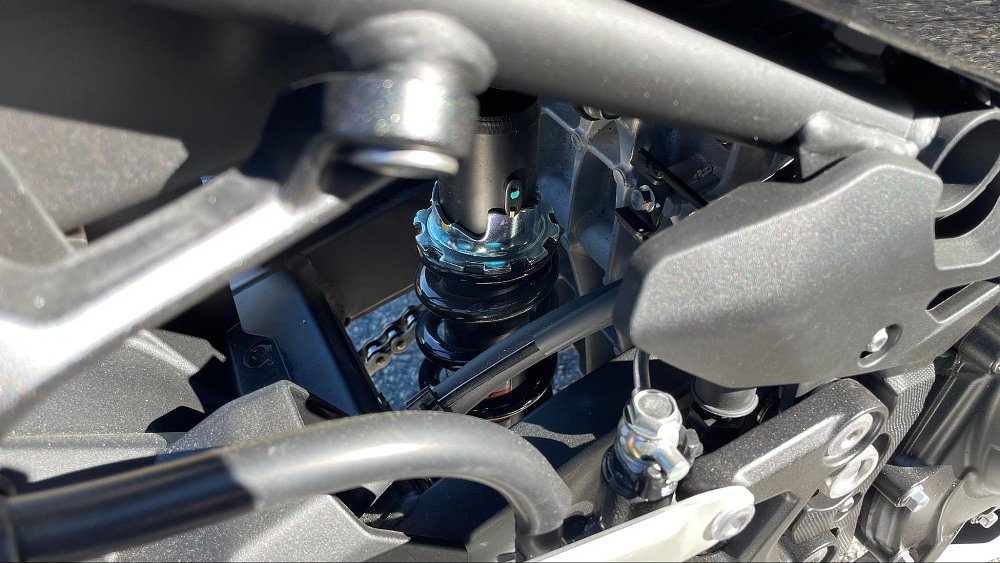
One of the surprises on the ride was how stiff the rear suspension was. Rolling over some rough patches on the road at speed sent harsh vibrations up my spine. Normally, small-displacement entry-level bikes run a little soft in the suspension settings, but not so with the baby Ninja. Between the the long reach to the levers and the stiff suspension, it would seem Kawasaki was hedging its bets that even larger riders would be interested in the smallest of the Ninjas.
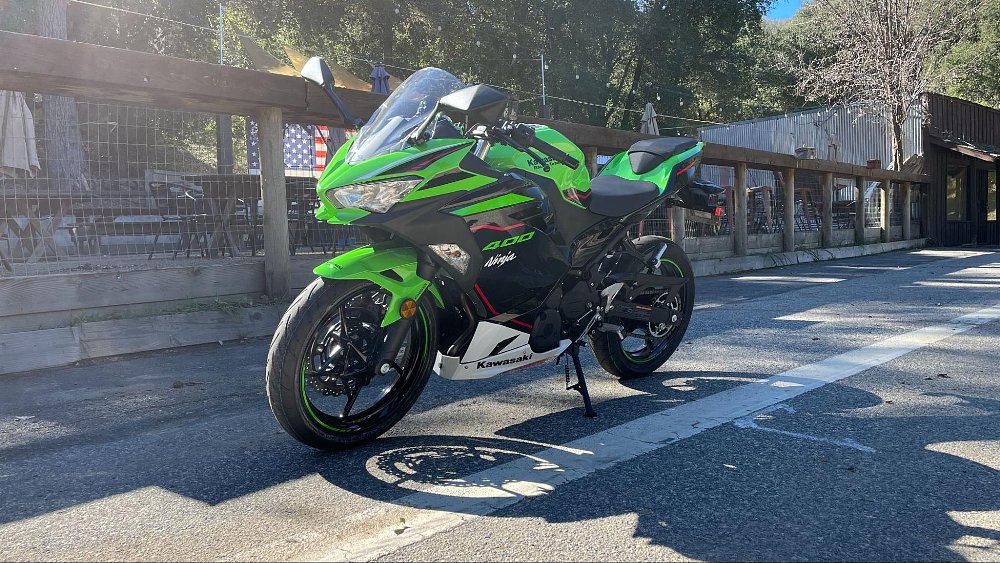
The Ninja 400’s performance DNA was on full display in the twistier and technical sections of the ride. This particular road was notorious for extremely tight hairpins and dodgy road conditions, and can be a bit stressful on a larger and more powerful sport bike. Instead of timidly tip-toeing around these corners, the Ninja 400 was on the attack. All the hype about the agility of the Ninja 400 held true on this winding and snaking road. It was light, nimble, and yet stable through the corner. While the rear shock stiffness had been a surprise, the front fork on the Ninja behaved as expected. It did its job reliably and without any severe diving or rebounding and was in overall harmony with the machine as it hustled through the curvy backcountry roads.
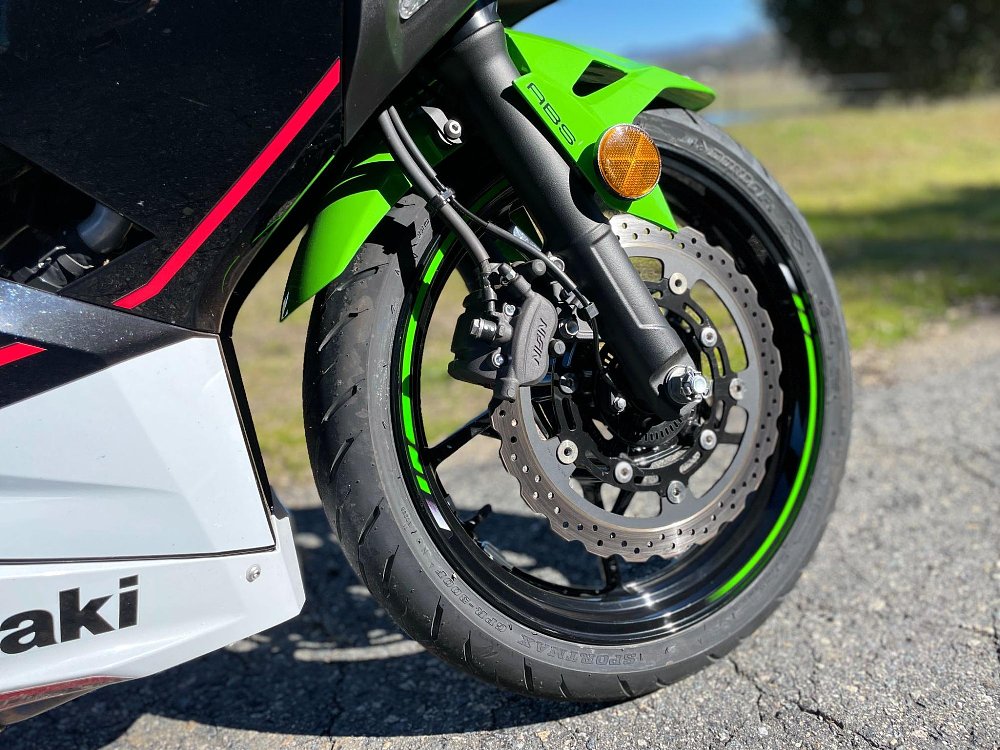
The assist-and-slipper clutch made clicking through the gears a breeze, not a single clunk or hang up. It made the entry-level Ninja 400 feel more premium than I had expected. The front brake itself engages quickly with a gentle pull on the lever, and bites down with more aggression than I had anticipated. A touchy front brake is nothing new on a sport bike and one I am accustomed to, but I couldn’t help but wonder if my beginner self would have been ready for that strong stopping power.
That negative thought is what bloomed in my mind as the Ninja 400 and I turned off from the twisties and back to the gentle sweepers towards home. Is it possible the Ninja 400 might be too much bike for a beginner?
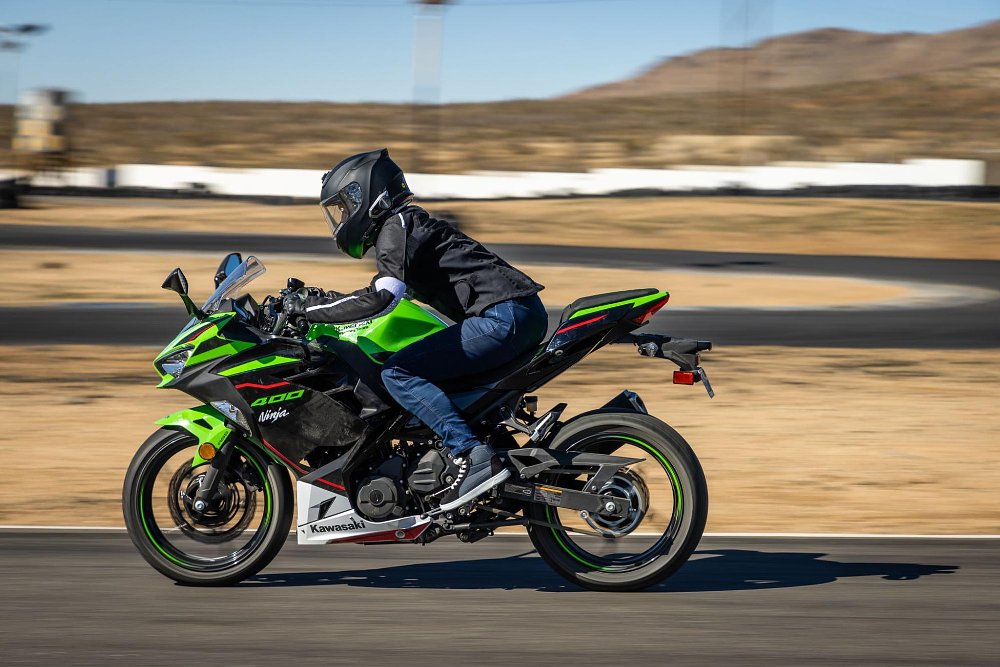
The new era of small displacement
Would my teenage self be up to the task of managing the performance and power of the current-day Ninja 400? It is really hard to say, but the good news is that the small-displacement market now has such a diversity of options that every new rider should be able to find a machine with mild manners to suit those very formative first few seasons of riding. For those keen on starting with a beginner sport bike, there are other tamer options out there besides the Ninja 400, such as the Honda CBR300R, the Yamaha YZF-R3, and the Suzuki GSX250R. Just about every manufacturer also has a naked version of these machines to consider, as well.
There is a reason the Ninja 400 has appeal stretching beyond the “beginner-bike market” and has become a favorite for experienced riders and club racers across the country. It is because it very deliberately presses at that boundary of what we commonly accept from a small-displacement starter bike. The mini Ninjas have grown over the years, in displacement and power and the recently announced Ninja ZX-4RR tests the very notion that “small displacement equals beginner bike.” It's a good time to be a beginner.
| 2022 Kawasaki Ninja 400 ABS KRT Edition | |
|---|---|
| Price (MSRP) | $5,599 |
| Engine | 399 cc, four-stroke, parallel twin, DOHC, liquid-cooled |
|
Transmission, final drive |
Six-speed, chain |
| Claimed horsepower | NA |
| Claimed torque | NA |
| Frame | Trellis, high tensile steel |
| Front suspension | 41 mm telescopic fork; 4.7 inches of travel |
| Rear suspension | Horizontal back-link with adjustable preload; 5.1 inches of travel |
| Front brake | Dual-piston caliper, 310 mm single disc with ABS |
| Rear brake | Single-piston caliper, 220 mm disc with ABS |
| Rake, trail | 24.7 degrees, 3.6 inches |
| Wheelbase | 53.9 inches |
| Seat height | 30.9 inches |
| Fuel capacity | 3.7 gallons |
| Tires | 110/70-17 front, 150/70-17 rear |
| Claimed weight | 366 pounds |
| Available | Now |
| Warranty | 12 months |
| More info | kawasaki.com |













